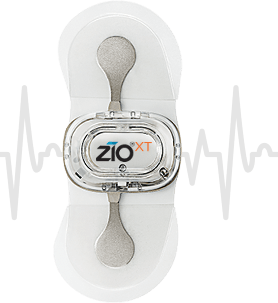

In addition, the potential for cost savings to the healthcare system are.

The ZIO Service detected two arrhythmias not captured by the Holter during the initial 24 hour period. Table 2 further summarizes the differences between the Holter monitor and Zio Patch.
ZIO HEART MONITOR COST PATCH
However, all of those arrhythmias were picked beyond 24 hours by the patch during the device’s extended monitoring period. One unexpected finding was that the Holter monitor detected 11 more arrhythmias than the ZIO Service during the initial 24 hour period when both devices were working simultaneously. A survey of study participants found that 81 percent of them preferred wearing the patch over the Holter monitor, with 76 percent saying the Holter monitor affected their daily living activities. Physicians who reviewed data from both devices reported reaching a definitive diagnosis 90 percent of the time when using the patch results and 64 percent of the time when using Holter monitor data. An arrhythmia event was defined to be 1 of 6 types: “supraventricular tachycardia (>4 beats, not including atrial fibrillation or flutter), atrial fibrillation/fluter (>4 beats), pause >3 seconds, atrioventricular block (Mobitz type II or third-degree atrivoventricular block), ventricular tachycardia (>4 beats), or polymorphic ventricular tachycardia/ventricular fibrillation”. They found that the ZIO Service detected 96 arrhythmia events, while the Holter monitor detected 61. Holter Monitor Product Comparison includes: Device size & weight. The company's stock price dropped 39.47 on Monday to close at 80.36. Our Holter Monitor Product Comparison is created to assist you in comparing the features, capabilities, product specifications and analysis to save you time & money in your evaluation. In the current study, the researchers collected data from 146 patients who were equipped with both a Holter monitor for 24 hours, and a ZIO Patch for 2 weeks. Medicare reimbursement represented 27 of iRhythm’s overall revenue in 2020, with a small percentage of that 27 attributable to Zio AT and Zio XT for wear of less than 48 hours, for which services are priced nationally and not impacted by the updated Novitas rates.
ZIO HEART MONITOR COST FULL
At the end of the 2 weeks, the patch must be sent back to iRhythm for a full analysis using the ZIO Service’s proprietary algorithms, and a diagnostic report is then relayed to the patient’s physician. It sports hydrogel electrodes for clearer ECG tracings and a button to capture symptomatic events. Most other consumer electronic devices containing batteries are allowed in carry-on and checked baggage.įor more information, see the FAA regulations on batteries.The FDA-cleared ZIO Patch is a small, adhesive, water-resistant one lead ECG sensor that the user can stick onto their chest for a continuous 24-hour monitoring over 2 weeks. If you need assistance with screening, you may ask for a Passenger Support Specialist or a Supervisory TSA Officer.ĭevices containing lithium metal or lithium ion batteries must be carried in carry-on baggage. For more information, see TSA special procedures. If you cannot disconnect from the device, it may require additional screening and those in sensitive areas are subject to careful and gentle inspection. ePatch Direct brings together an Extended Wear Holter device and patient monitoring service that includes clinical analysis with a patient report in one convenient kit: BioTel Heart® ePatch Extended Wear Holter sensor. Consult with the manufacturer of the device to determine whether it can pass through the X-ray, metal detector or advanced imaging technology for screening. Submit the device for X-ray screening if you can safely disconnect. You may provide the officer with the TSA notification card or other medical documentation to describe your condition. Inform the TSA officer if you have a bone growth stimulator, spinal stimulator, neurostimulator, port, feeding tube, insulin pump, ostomy or other medical device attached to your body and where it is located before the screening process begins. The minimum heart rate recorded using the Holter monitor will be compared to the minimum heart rate recorded using the Zio patch monitor averaged across all patients used paired t-test.


 0 kommentar(er)
0 kommentar(er)
